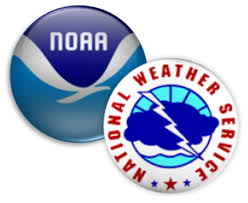HURRICANE MILTON – 2000 EDT – 10/08/24
Hurricane Milton has remained between a Category 4 and a Category 5 hurricane. Milton is in the process of beginning the turn towards the northeast and head for the Florida west coast. An approaching front with its preceding trough will determine the final path of Milton. That cold front and trough will increase the wind shear across Milton and some drier air will get drawn into Milton, lowering its intensity somewhat before landfall on the Florida west coastal, which for right now is near Sarasota, south of where the landfall was previously expected. In spite of this change in expected landfall, Milton is still a dangerous storm and not to be taken for granted.
COASTAL WATCHES/WARNINGS AND FORECAST CONE FOR STORM CENTER

SUMMARY OF 2000 EST…0000 UTC…INFORMATION
——————————————————————————-
LOCATION…23.0N 86.9W
ABOUT 280 MI…450 KM WSW OF THE DRY TORTUGAS
ABOUT 440 MI…710 KM SW OF TAMPA FLORIDA
MAXIMUM SUSTAINED WINDS…165 MPH…270 KM/H
PRESENT MOVEMENT…ENE OR 70 DEGREES AT 10 MPH…17 KM/H
MINIMUM CENTRAL PRESSURE…902 MB…26.64 INCHES
SUMMARY OF WATCHES AND WARNINGS IN EFFECT:
SUMMARY OF WATCHES AND WARNINGS IN EFFECT:
A Storm Surge Warning is in effect for…
* Florida west coast from Flamingo northward to Suwannee River, including Charlotte Harbor and Tampa Bay
* Sebastian Inlet Florida to Altamaha Sound Georgia, including the St. Johns River
A Hurricane Warning is in effect for…
* Florida west coast from Bonita Beach northward to Suwannee River, including Tampa Bay
* Florida east coast from the St. Lucie/Martin County Line northward to Ponte Vedra Beach
A Storm Surge Watch is in effect for…
* North of Altamaha Sound Georgia to Edisto Beach South Carolina
A Hurricane Watch is in effect for…
* Dry Tortugas
* Lake Okeechobee
* Florida west coast from Chokoloskee to south of Bonita Beach
* Florida east coast north of Ponte Vedra Beach to the mouth of the St. Marys River
* Florida east coast from the St. Lucie/Martin County Line to the Palm Beach/Martin County Line
A Tropical Storm Warning is in effect for…
* Dzilam to Cancun Mexico
* Florida Keys, including Dry Tortugas and Florida Bay
* Lake Okeechobee
* Florida west coast from Flamingo to south of Bonita Beach
* Florida west coast from north of Suwanee River to Indian Pass
* Florida east coast south of the St. Lucie/Martin County Line to Flamingo
* North of Ponte Vedra Beach Florida to Altamaha Sound Georgia
* Extreme northwestern Bahamas, including Grand Bahama Island, the Abacos, and Bimini
A Tropical Storm Watch is in effect for…
* North of Altamaha Sound Georgia to South Santee River South Carolina
A Storm Surge Warning means there is a danger of life-threatening inundation, from rising water moving inland from the coastline, during the next 36 hours in the indicated locations. For a depiction of areas at risk, please see the National Weather Service Storm Surge Watch/Warning Graphic, available at hurricanes.gov. This is a life-threatening situation. Persons located within these areas should take all necessary actions to protect life and property from rising water and the potential for other dangerous conditions. Promptly follow evacuation and other instructions from local officials.
A Hurricane Warning means that hurricane conditions are expected somewhere within the warning area. A warning is typically issued 36 hours before the anticipated first occurrence of tropical-storm-force winds, conditions that make outside preparations difficult or dangerous. Preparations to protect life and property should be rushed to completion.
A Tropical Storm Warning means that tropical storm conditions are expected somewhere within the warning area within 36 hours.
A Storm Surge Watch means there is a possibility of life- threatening inundation, from rising water moving inland from the coastline, in the indicated locations during the next 48 hours. For a depiction of areas at risk, please see the National Weather Service Storm Surge Watch/Warning Graphic, available at hurricanes.gov.
A Hurricane Watch means that hurricane conditions are possible within the watch area. A watch is typically issued 48 hours before the anticipated first occurrence of tropical-storm-force winds, conditions that make outside preparations difficult or dangerous.
A Tropical Storm Watch means that tropical storm conditions are possible within the watch area, generally within 48 hours.
For storm information specific to your area in the United States, including possible inland watches and warnings, please monitor products issued by your local National Weather Service forecast office. For storm information specific to your area outside of the United States, please monitor products issued by your national meteorological service.
FORECAST DISCUSSION:
The Air Force Reserve Hurricane Hunters found that Milton’s central pressure had fallen to 923 mb in the last pass they made through the eye a few hours ago. The satellite presentation has improved since that time, with a thick ring of cold cloud tops surrounding a 10-mile-wide eye. This pattern yielded a T7.0/140 kt from TAFB, with several of the objective satellite estimates between 140 and 145 kt. Milton has again become a category 5 hurricane, with maximum winds estimated to be 145 kt. Another Air Force mission is
entering Milton as we speak.
Milton wobbled a bit to the southeast today, but the longer-term 12-hour motion is east-northeastward (075/8 kt). Milton is forecast to turn northeastward and begin accelerating later today as it moves between a trough digging into the Gulf of Mexico and a ridge near
the Greater Antilles. Because of the wobble, the track guidance has been initialized a bit to the south of where many of the raw model fields think the hurricane was centered at 1800 UTC, and this has caused the entire guidance envelope to shift a bit south on this cycle. It is still critical to remember that even at 36 hours (around the time of potential landfall), NHC’s track forecasts can be off by an average of 60 n mi, which means we still can’t
pinpoint an exact landfall location, especially if additional wobbles occur in the short term. After landfall, Milton is forecast to cross Florida and emerge over the Atlantic waters on
Thursday.
Milton is expected to maintain major hurricane strength while it moves across the Gulf of Mexico and approaches the west coast of Florida. Stronger vertical shear is expected to increase in about 24 hours, but even if this causes some weakening, it will likely not
be enough to keep Milton from being an extremely dangerous hurricane when it reaches shore. Additionally, the first stages of extratropical transition may be just underway as Milton is reaching the coast, which could impart some baroclinic energy and slow the
rate of weakening. The NHC intensity forecast is close to the top end of the model envelope, which includes the GFS and ECMWF models, since these models should have a better handle on a potential positive trough interaction.
Milton’s wind field is expected to expand as it approaches Florida. In fact, the official forecast shows the hurricane and tropical-storm-force winds roughly doubling in size by the time it makes landfall. In addition, the stronger-than-normal winds could occur on the northwest/back side of the storm since Milton will be interacting with a frontal boundary and beginning extratropical transition. Damaging winds, life-threatening storm surge, and heavy rainfall will extend well outside the forecast cone. This is a very serious situation and residents in Florida should closely follow orders from their local emergency management officials. Evacuations and other preparations should be completed today.
Milton has the potential to be one of the most destructive hurricanes on record for west-central Florida.
SITUATION AND ACTIONS:
The ARRL West Central Florida Section now has the following watches and warnings in effect:
- Hurricane Warning until further notice: Charlotte, Desoto, Hardee, Highlands, Hillsborough, Pasco, Pinellas, Polk, and Sarasota Counties.
- Storm Surge Warning until further notice: Coastal Pasco, Pinellas, Coastal Hillsborough, Coastal Manatee, Coastal Sarasota, and Coastal Charlotte Counties.
- Flood Watch through Thursday morning.
As of press time, we have the following information on ARES groups activations. The following ARES groups have been activated: Charlotte County ARES, Hillsborough County ARES/RACES, Pinellas County ARES/ACS, Manatee County ARES, and Desoto County ARES. The following ARES groups are to active on Wednesday morning 10/09/24: Hardee County ARES, Highlands County ARES, and Polk County ARES.
The Section ARES Alert Level is currently at a Level 2. Then when all ARES groups available activate, the ARES Alert Level will go to a Leve1 alert, which is a full activation. This is subject to change on a moments notice. The latest status can be found on the main page of the Section website under the “ARRL West Central Florida Section ARES Alert Status.
A Regional SKWYARN Net will be held on the NI4CE Analog and NI4CE NXDN Systems (talkgroup 1299) once the landfall of Milton gets closer.
All ARES, ACS, and CERT personnel are encouraged to rush to completion any personal preparations that have not been completed.
All ARES, ACS, and CERT personnel are encouraged to continue to check the Tropical Weather Outlook issued four times daily by the National Hurricane Center. Currently there are two other tropical storms out in the Atlantic, which do not threaten the continental United States. However, this can change rapidly, so vigilance is the order of hurricane season.
LATEST NATIONAL HURRICANE CENTER INFORMATION:
Public Advisories: https://www.nhc.noaa.gov/text/refresh/MIATCPAT4+shtml/062052.shtml?
Forecast Advisory: https://www.nhc.noaa.gov/text/refresh/MIATCMAT4+shtml/062051.shtml?
Forecast Discussion: https://www.nhc.noaa.gov/text/refresh/MIATCDAT4+shtml/062053.shtml?
Latest GOES Satellite Floater Images and Loop: https://www.star.nesdis.noaa.gov/GOES/floater.php?stormid=AL142024#navLink
CONCLUSION
The next WCF SECTION SPECIAL BULLETIN will be issued around 2000 EDT tomorrow evening or sooner if conditions warrant.
END OF SPECIAL BULLETIN










